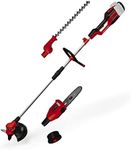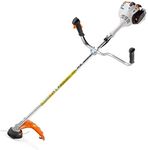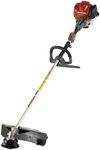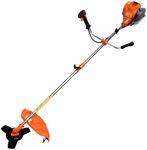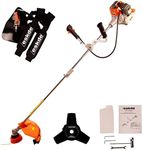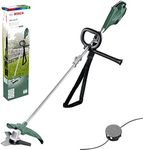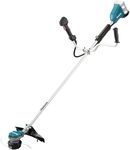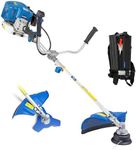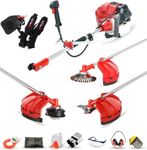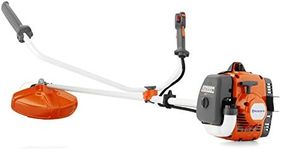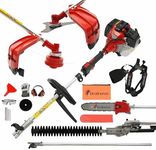Buying Guide for the Best Brush Cutters
Choosing the right brush cutter can make a significant difference in maintaining your garden or property. Brush cutters are powerful tools designed to tackle tough vegetation, including thick grass, weeds, and even small trees. To find the best brush cutter for your needs, it's important to understand the key specifications and how they relate to your specific requirements. Here are the main factors to consider when selecting a brush cutter.Engine PowerEngine power, measured in horsepower (HP) or cubic centimeters (cc), determines the cutting ability of the brush cutter. Higher power engines can handle thicker and tougher vegetation. For light to moderate tasks, an engine with 25-35cc is usually sufficient. For more demanding jobs, such as clearing dense brush or small trees, look for engines with 40cc or more. Consider the size and density of the area you need to maintain to choose the right engine power.
Cutting WidthThe cutting width refers to the diameter of the area the brush cutter can clear in one pass. A wider cutting width means you can cover more ground quickly, which is useful for larger areas. Cutting widths typically range from 8 to 18 inches. For small gardens or precise trimming, a narrower cutting width is adequate. For larger properties or extensive clearing, opt for a wider cutting width to save time and effort.
WeightThe weight of the brush cutter affects how easy it is to handle and maneuver. Lighter models, usually under 15 pounds, are easier to carry and use for extended periods, making them suitable for smaller tasks or users with less physical strength. Heavier models, over 15 pounds, often have more power and durability, ideal for larger or more challenging jobs. Consider your physical capability and the duration of use when selecting the weight.
Handle TypeBrush cutters come with different handle types, including loop handles and bike handles. Loop handles offer better control and are suitable for precision work in tight spaces. Bike handles provide a more comfortable grip for extended use and are better for larger areas. Choose a handle type based on the nature of your work and your comfort preference.
Blade TypeThe blade type determines what kind of vegetation the brush cutter can handle. Metal blades are ideal for thick brush, woody plants, and small trees. Nylon line heads are better for grass and light weeds. Some models offer interchangeable heads, providing versatility for different tasks. Assess the type of vegetation you need to cut and choose the appropriate blade type.
Fuel TypeBrush cutters can be powered by gasoline, electricity, or batteries. Gasoline-powered models offer more power and mobility, suitable for large areas and heavy-duty tasks. Electric models are quieter and require less maintenance but need a power source, making them ideal for smaller areas. Battery-powered models offer a balance of mobility and convenience, best for medium-sized tasks. Consider the size of your property and the availability of power sources when choosing the fuel type.
Vibration ReductionVibration reduction features help minimize user fatigue and improve comfort during extended use. Look for models with anti-vibration systems or ergonomic designs that reduce the impact of vibrations on your hands and arms. This is particularly important if you plan to use the brush cutter for long periods or have sensitivity to vibrations.
